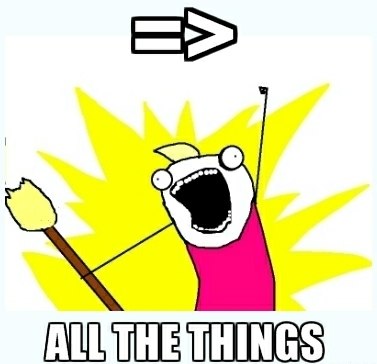
In my last talk that I gave on CoffeeScript I quickly went over function binding and
CoffeeScript’s => syntax. My point was that when you need to use .bind(this) then
you could just use => for shorter syntax. The inevitable question that
came up was “Why wouldn’t I just use that everywhere?”. It’s a valid question,
especially coming from people that aren’t in the JavaScript world a lot and/or
haven’t figured out the this craziness. I didn’t have a good
answer at the time, but I gave the example of jQuery setting this to the
event element and you might want that this pointer instead of the current
one.
class ClickLogger
clicked: ->
console.log(@.href)
clickedBound: (event) =>
console.log(event.target.href)
$("a").on("click", new ClickLogger().clicked)
$("a").on("click", new ClickLogger().clickedBound)
In the example above we want the element that was clicked and we don’t need anything from the instance of
ClickLogger so there is no reason to bind it. It also shows what you would
have to do if you did bind it.
Fast forward to present day when Les Hill posted some slides of a Backbone and Rails presentation he did. In there was…

…which got me thinking about it again. So I asked him and his response was…

Intention revealing. So by not using => everywhere means that I know
what it does and when I should use it and that I really intended to override the
default behavior.
Just because you have shorter syntax to do cumbersome things doesn’t mean you should use it everywhere, especially if you wouldn’t have naturally done the cumbersome thing if you didn’t have the shorter syntax.
In case you were wondering if performance was a reason for not using it everywhere…it’s not.